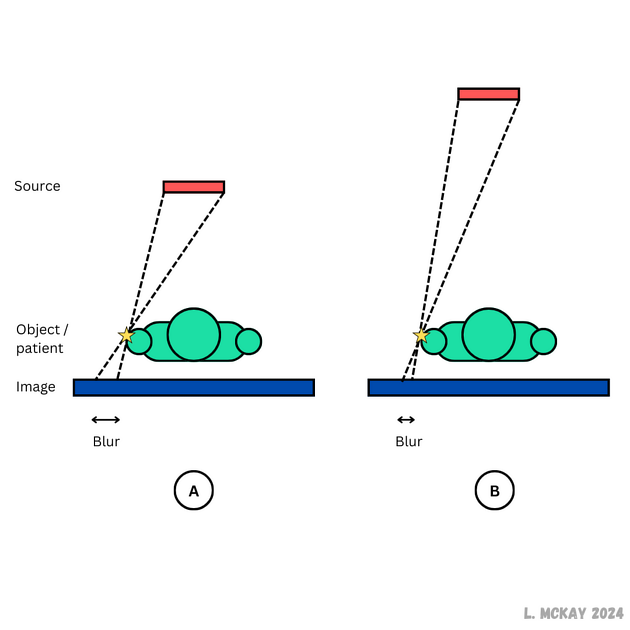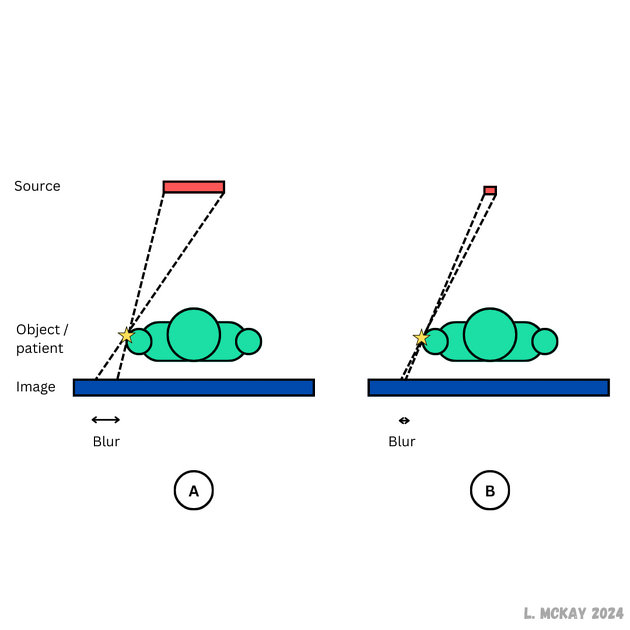Blurring, or unsharpness, refers to the distortion of the definition of objects in an image, resulting in poor spatial resolution.
Types of blur
-
geometric blur
-
in terms of X-ray based imaging, reducing focal spot size, reducing the distance from patient to receptor (termed object to image distance), and increasing the distance from the source to the patient (termed source to object distance) or film can reduce the geometric blur or radiographic distortion 2. Thus, geometric blur can be described by the equation:
-
Geometric Blur = f * (OID / SOD)
f = focal spot size,
OID = object to image distance
SOD = source to object distance
-
-
-
detector blur
limited by detector components (screen thickness in film systems, detector element size in digital systems)
thicker intensifying screens tend to have higher speed (or sensitivity) but blurring will be much greater than thinner screens 3
poor screen-film contact will also produce blurring 3
if the film emulsion does not completely absorb the light from the intensifying screen, the light will "crossover", exposing the emulsion of the other side, causing blurring 3
-
caused by voluntary (gross motor movements) /involuntary (breathing, heart beating, intestinal peristalsis) movement of a patient
Motion blur can be reduced by immobilization (e.g. pressing breasts between two plates in mammography), breath holding, and using short exposure time. However, short exposure time will reduce the density of the radiographic film causing the image to be too light/bright. Therefore, higher mAs or more sensitive radiographic film is needed to compensate for short exposure time 2.
-
absorption blur
blurring at the edge of a rounded/tapered structure where there is a gradual change in x-ray absorption across this boundary







 Unable to process the form. Check for errors and try again.
Unable to process the form. Check for errors and try again.